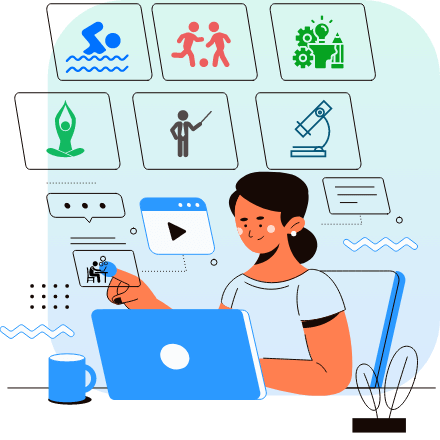

Search in
Ask a Question

Mahesh Sharma
Digital marketing Professionals with 12 Years Experience in IT Company
SEO (Search Engine Optimization) is the process of improving a website so it ranks higher on search engines like Google.
How it works: SEO optimizes your website’s content, keywords, technical setup, and backlinks so search engines can easily understand and show it to users when they search for related topics. This helps bring free, organic traffic to your website.
read less Ask a Question

Semtitans Digital
Semtitans Digital
On-page SEO refers to the practice of optimizing individual web pages to improve their search engine rankings and attract relevant traffic. It focuses on elements that are directly within your control on your website, rather than external factors like backlinks. The goal is to make both search engines and users understand what your page is about and provide a good user experience.
Key components of on-page SEO include optimizing title tags, meta descriptions, headings, URL structure, and image alt texts, as well as ensuring the content is high-quality, relevant, and includes appropriate keywords. Other factors like internal linking, page speed, mobile-friendliness, and proper use of structured data also play a role. Effective on-page SEO helps search engines crawl, index, and rank your pages more effectively while keeping visitors engaged.
read less Ask a Question

Dheeraj Kushwaha
IT Corporate Trainer with 9 years of experience in Edu tech
Advantages of digital marketing
The main advantage of digital marketing is that a targeted audience can be reached in a cost-effective and measurable way. Other digital marketing advantages include increasing brand loyalty and driving online sales.
The benefits of digital marketing include:
Global reach
A website allows you to find new markets and trade globally for only a small investment.
Lower cost
A properly planned and well-targeted digital marketing campaign can reach the right customers at a much lower cost than traditional marketing methods.
Trackable, measurable results
Measuring your online marketing with web analytics and other online metric tools makes it easier to establish how effective your campaign has been. You can obtain detailed information about how customers use your website or respond to your advertising.
Personalisation
If your customer database is linked to your website, then whenever someone visits the site, you can greet them with targeted offers. The more they buy from you, the more you can refine your customer profile and market effectively to them.
Openness
By getting involved with social media and managing it carefully, you can build customer loyalty and create a reputation for being easy to engage with.
Social currency
Digital marketing lets you create engaging campaigns using content marketing tactics. This content (images, videos, articles) can gain social currency - being passed from user to user and becoming viral.
Improved conversion rates
If you have a website, then your customers are only ever a few clicks away from making a purchase. Unlike other media which require people to get up and make a phone call, or go to a shop, digital marketing can be seamless and immediate.
Together, all of these aspects of digital marketing have the potential to add up to more sales.
Disadvantages of digital marketing
Some of the downsides and challenges of digital marketing you should be aware of include:
Skills and training
You will need to ensure that your staff have the right knowledge and expertise to carry out digital marketing with success. Tools, platforms and trends change rapidly and it's vital that you keep up-to-date.
Time consuming
Tasks such as optimising online advertising campaigns and creating marketing content can take up a lot of time. It's important to measure your results to ensure a return-on-investment.
High competition
While you can reach a global audience with digital marketing, you are also up against global competition. It can be a challenge to stand out against competitors and to grab attention among the many messages aimed at consumers online.
Complaints and feedback
Any negative feedback or criticism of your brand is can be visible to your audience through social media and review websites. Carrying out effective customer service online can be challenging. Negative comments or failure to respond effectively can damage your brand reputation.
Security and privacy issues
There are a number of legal considerations around collecting and using customer data for digital marketing purposes. Take care to comply with the rules regarding privacy and data protection.
Ask a Question

Dheeraj Kushwaha
IT Corporate Trainer with 9 years of experience in Edu tech
Ask a Question

Siddhi Kandekar
Digital marketing professional with 5 Years of experince.
their are 8 types of digital marketing
Ask a Question

Siddhi Kandekar
Digital marketing professional with 5 Years of experince.
Ask a Question

Siddhi Kandekar
Digital marketing professional with 5 Years of experince.
Ask a Question

Rakshit Achra
Professional with a Passion for Teaching
Ask a Question

ADM IT Solutions / Consulting
Ask a Question

Kumuda G.
Physics Lecturer
Overview
Questions 2.1 k
Ask a Question
The best tutors for Functional Training Classes are on UrbanPro

The best Tutors for Functional Training Classes are on UrbanPro